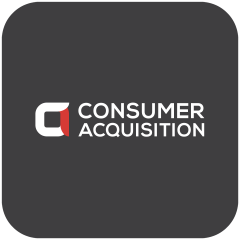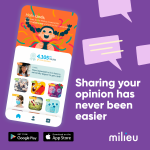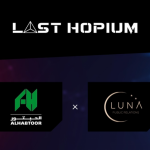Top competitors in the mobile app dating space include Tinder, Hinge, Skout, Clover, Match, Plenty of Fish, OKCupid, and Coffee Meets Bagel. Brian shares his team’s competitive research that reveals which creative trends are currently working best across social platforms. To identify trends, Facebook Ad Library lets marketers see every ad currently running on their ad network. TikTok For Business surfaces top-performing ads by installs, engagement, and reach. Marketers can also use Mobile Action, SensorTower, or AppAnnie competitor libraries for additional insights.
Whether your mobile app is fintech, fashion, or fitness, understanding user motivations is critical for a successful user acquisition campaign. With the season of love upon us, dating app ad creative perfectly illuminates how persona-based creative concepts appeal to the unique motivations of different users.
- Get an analysis of high performing ad creative for top dating apps
- Explore varied user motivations for dating apps
- Discover dating app creative trends for TikTok compared to Facebook
- Compare successful Hinge and Plenty of Fish ad creative
From long-term romance to casual connections, dating apps put matchmaking in your pocket. To see what’s bringing people together, we’ve analyzed creative trends and user motivations for dating apps, with a focus on Hinge and Plenty of Fish. Using data from Facebook Ad Library, TikTok For Business, and MobileAction, we compare what ad creative is working for dating apps right now.
Analyzing Dating App Creative Trends
Top competitors in the mobile app dating space include Tinder, Hinge, Skout, Clover, Match, Plenty of Fish, OKCupid, and Coffee Meets Bagel. Competitive research reveals which creative trends are currently working best across social platforms. To identify trends, Facebook Ad Library lets marketers see every ad currently running on their ad network. TikTok For Business surfaces top-performing ads by installs, engagement, and reach. Marketers can also use Mobile Action, SensorTower, or AppAnnie competitor libraries for additional insights.
Based on information from Facebook Ad Library, TikTok For Business, and MobileAction, dating app creative trends we’ve identified include:
- App Overview: Overview of the app that showcases features and user experience
- App Content: Captured content and screen grabs from the app
- Testimonial: Focused on a user’s review and/or experience of the app
- Influencers: Utilizing influencers and/or celebs to deliver the primary message
- UGC: Content a user would upload to social media regarding the app
- Tips & Quizzes: Communicating features or benefits through advice or quizzes
On TikTok in the past thirty days, Hinge and Plenty of Fish have run several top-performing category ads that leverage these trends. Successful ads are measured by installs as a campaign objective.
Creative Trends on TikTok

Source: TikTok For Business Creative Center Top Ads
Hinge TikTok ads almost universally use faux testimonials and UGC-style videos. This approach uses direct address toward the audience, text overlays, and looks like entirely native content. In contrast to Hinge’s UGC ads, Plenty of Fish high performing TikTok ads focus on the app experience and features rotating dating profile photos with minimalistic UI. Captured content and screen grabs from the app help communicate the interaction process while rotating through a swath of other potential users.


Source: TikTok For Business Creative Center Top Ads
Creative Trends on Facebook
Facebook and Instagram ads for Hinge reveal a different angle for their audience. These ads feature romance and long-term relationship goals through their tagline “The dating app designed to be deleted.” One high-performing Facebook ad ironically shows a profile of a person who confesses to being “weirdly attracted to people who aren’t on social media.”



Source: Facebook Ad Library (left) and Mobile Action (centre, right)
Ads here also use UGC in a notably different way than respective TikTok UGC ads: messages are screenshots within a social media post to showcase the meta-commentary.


Source: Facebook Ad Library
Plenty of Fish ads on Facebook and Instagram are similar to their respective TikTok ads. These ads focus on the app experience, profiles en masse, newness, locality, and the promise of “more.”



Source: Facebook Ad Library
Identifying Dating App User Motivations
As consumer marketing has grown up, we’ve learned there is no perfect Pepsi, but there are perfect Pepsis for particular palates; the same goes for products in any market. Before building out a matrix for a particular set of ad concepts, we identify different motivations driving our user personas and break down those motivations by underlying values and desires. Below we’ve included motivational triggers for dating app users.

Ad creative for Hinge compared to Plenty of Fish illuminates how different concepts can appeal to different user motivations.


Source: Facebook Ad Library
Users seeking love, authentic connections, and validation respond to the success messaging of Hinge, along with the high quality of the imagery, the brand promise, and the focus on one-to-one attention.
Users seeking casual connections, or the excitement of discovery, respond to the Plenty of Fish promise of fast onboarding (not “a million questions”), and “new singles” in the area. Even the “See More” prompt teases a surplus of profiles to access.
Creating Dating App Ad Concepts
To develop and iterate on different creative concepts, map identified motivations to creative trends within the category. In the empty model below, each box represents a different ad creative concept, supporting nearly 40 concepts by pairing six trends with six motivations. While not all creative trends will work persuasively with each motivation, you can expand our concepts even further by targeting specific personas within each pairing. Based on personas, we develop a bespoke creative strategy targeting behaviours, triggers, and preferences.
The proposed ad concept model acts as a foundation for an iterative creative process that can be customized and extended to develop endless ad concepts for an app, website, or service. By building a scalable infrastructure for creative ideation, we provide unique lanes for creative teams and media buyers to explore ideas. The model also acts as an archive of knowledge to ensure we are always optimizing what we’ve learned.

Based on the high-performing dating app ads outlined above:
- Hinge TikTok ads use the creative trend of UGC and the motivations of validation, trendiness, and excitement.
- Hinge Facebook ads use the creative trends of App Content and UGC with the user motivations of love, authentic connection, brand trust, and excitement.
- Plenty of Fish ads on TikTok and Facebook use the creative trend of App Content with the user motivations of casual dating, ease of use, convenience, speed, and discovery.
Media Buying Model
As a complementary tool to your ad concepting, consider using a media buying model that uses a similar matrixed approach to systematize best practices for user acquisition campaign development. Any mobile app can leverage a unique combination of distinct UA strategies and campaign parameters to develop a robust testing harness for ongoing mobile campaigns across social platforms.
In its most generic state, a media buying model looks like the matrix below, prior to building out a mobile app user acquisition strategy. The entire matrix is tailored to a respective ad network and operating system requirements and constraints. Geographies, languages, and bid types are all modified based on the client’s needs. Each campaign is structured to meet specific goals at the intersection of strategies and parameters.

















